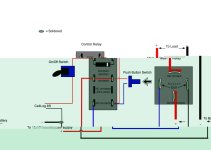Hey, I want to make a little circuit to discharge a single moli cell to check capacity, and I'm wondering what size of resistor to use.
I figured that I'd try to get the discharge time to be similar to "in use" discharge times.
I am guesstimating that a whole pack would probably get me 1-2 hrs of run time.
So, what size of resistor would be appropriate to drain a cell like this over 2 hrs or so?
I am aware that I can calculate the value, but this does not take into account the dropping voltage, and that's what confuses me.
Thanks!
Katou
I figured that I'd try to get the discharge time to be similar to "in use" discharge times.
I am guesstimating that a whole pack would probably get me 1-2 hrs of run time.
So, what size of resistor would be appropriate to drain a cell like this over 2 hrs or so?
I am aware that I can calculate the value, but this does not take into account the dropping voltage, and that's what confuses me.
Thanks!
Katou


